Article and photos by Peter Wade
In the antiques trade, the term “smalls” is a descriptive term used to refer to the many small items found amongst the thousands of antiques collected today. Often this descriptive has had a slightly negative connotation in that smalls were thought of as the lessor collectibles, frequently overlooked and often delegated to the backroom of antique shops. This approach equated size to importance and value.
We’ve all heard stories of a diamond being found in a box of costume jewelry. But, for the savvy, sharp-eyed collector this is a significant opportunity with real treasures to be found. Like diamonds, there are miniature glass collectibles that command rich valuations. Never equate size with value in the antiques world. Bigger isn’t always better.
“Miniatures” is a common term used for “smalls” in glass collecting. These range from tiny objects like marbles up to anything easily fitting into your hand. There are literally, thousands of items to pick and choose from, depending upon your interests. What you should know about them is that their popularity is beginning to soar. The market is rediscovering them once again.
The world of antique glass miniatures is huge. There are too many to cover in one article. So, let’s look at a few major categories:
Jugs … Jugs … Jugs!
We’ve all seen them. You’ll find glass jugs in nearly every estate sale, usually on window ledges. Miniature window jugs, pitchers, vases, and cups and saucers were extremely popular in the 1930s through the 1970s. They were versatile and used to line window sills and ledges with color and brilliance. They can easily be found in the $10 to $20 range.
Kanawha, Pilgrim, Rainbow, Blenko and many other glassmakers all made them (and many others, too). Kanawha jugs were cheaper; Pilgrim was known for its cranberry glass, they used real gold in their glass formula to give it rich cranberry color. Blenko made miniatures of its larger pieces in brilliant lime glass. But, find an older plated amberina glass version from US Glass, a latticino glass version from Murano or Moser, and you’ll be paying north of $50 and more for the finer examples.
Salts … Salts … and more Salts!
Before Morton’s granulated salt took over the marketplace, salt was served at the table in “salts:” miniature rectangular or circular glass cups. You had small individual-sized cups as well as larger “master salts” for the head of the household. This was in the late 1800s. Salts came in a variety of sizes, shapes, and patterns. Some of the early, rare patterns can easily reach $100 or more each!
Many of these small table accessories didn’t survive. Those made from lacy or flint glass were fragile and often broke apart. They’re still worth the treasure hunt. Pressed glass versions took over around the 1890s, later to be replaced by the ever-popular modern salt shaker. Hidden among all the mass-produced versions are rarities that command impressive values. They’re fun to look for and take up very little room.
During the late 1800s, there were hundreds of glass novelties and whimsies made by many of the glasshouses. These were small glass figurines, often with an amusing theme, that were used as toothpick holders, match holders, match safes, match strikes, salts, condiment holders, etc. Many were just objects with no useful purpose other than to entertain you. Glass shoes are one example. They were made in a variety of colors to suit every decor. Vaseline glass examples sparkled in the candlelight. The variety of shapes and sizes make for a very entertaining, eye-catching display.
These novelties were first popular in their 1890s heyday and then they have cycled in and out of popularity every 25 years or so since. Each type is on a different cycle (toothpick holders, match holders, etc.) so that in any one time period, one type or the other is a current hot collectible.
Paperweights … Always Popular!
The world of paperweights forms its own distinct arena of collecting on an international scale. There are auctions regularly held, worldwide, just for this collecting category. It’s specialized and very competitive. Fine examples achieve rarified valuations.
Today, this marketplace has been taken over by the studio art glass market. Affordable, readily available unsigned examples can be found, almost at every estate sale or flea market. Look for examples that are signed by the artist. Paper labels often wash off, so an engraved signature is more important. Unsigned examples can be found for $10 to $25 or so. Signed examples by a known artist can sell in the $100s. Look for quality of workmanship. Avoid the mass-produced Chinese examples that have flooded the marketplace.
Animals and Birds, Too!
Glass figural animals have been produced for decades by many different glasshouses. Their popularity is enduring and vast. Current producers like Mosser and Boyd produce them in the thousands. Fenton Glass specialized in hand-painted versions and, again, sold thousands of them. Fenton’s were well made, cute, and very eye-catching, but are no longer being made. This is a glass category that’s taking off.
Today, look for those made by the better glass houses like Baccarat, Steuben, Murano, Waterford, Ilttala, Orrefors, Mats Jonasson, FM Ronneby, Oiva Toikka, Sea Glasbruk, and by the many known studio glass artists. Look for those that are identifiable or with readable signatures on them. Rarity and quality are the key things to look for here. Figural glass has been continually popular. The better, scarcer examples should hold and appreciate in value.
Collecting perfume bottles spans the last century. It’s a popular collecting category divided into major subcategories: Art Nouveau, Art Deco, Art Modern, Mid-Century Modern, and Studio Artist. Just about every type and kind of glass decorating have been used in making perfume bottles: cut and engraved crystal, art blown glass, molded and pressed glass.
This is a category of glass collecting that should require some research on your part to find out who to collect, why and what their signature collectible is. The category is too large to generalize, except to always look for quality, condition, name or known brands. Focus on finding examples that are clearly identifiable or signed.
It’s Toy Time!
Akro-Agate Co. made some wonderful children’s glass toy dish sets during the 1930s. They specialized in glass miniature sets and accessories.
Before plastics took over, glass was used to make playsets for children to play along with their dolls. Miniatures were made from the late 1800s to the present day. You’ll find everything from cups and saucers to fancy tableware. Like their larger versions, there are some real rarities to be found.
Cabinet Vases!
This may be the largest glass collecting category of all the miniature glass collectibles. A cabinet vase is a miniature to a small vase, usually five inches or under that was never intended to be utilitarian, but rather to be used for display as an art object. Often collections of these are displayed in china cabinets; hence, the commonly used reference of “cabinet vases” came about.
Here, you’ll find just about every kind of glass vase ever made. You’ll find examples from early American blown glassware up to present-day studio art glass. The craftsmanship and quality of the finer examples rival anything made in larger sizes with equally lofty prices to match.
It’s best to concentrate on collecting examples from a period, a certain country or type as you could fill a museum. Focus on one or two types. Still, because of their diminutive size, you can assemble a very nice collection in your china cabinet.
Discovering a gem in the glass world of miniatures requires patience and practice. Early examples were seldom marked. Some of the finest most valuable pieces from Murano have no markings. You need to expect this when conducting your own treasure hunt. Your senses are the best solution – sight and touch. Add some research and education. Go to a glass show for an up-close look at the differences between ordinary and extraordinary. It’ll be fun, too!

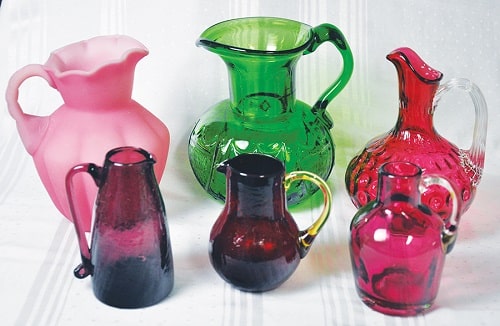


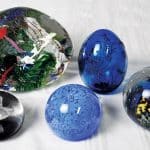



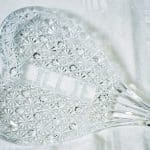
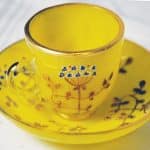
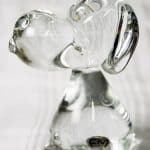
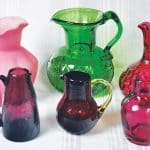
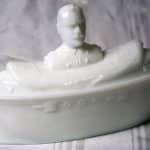



Related posts: